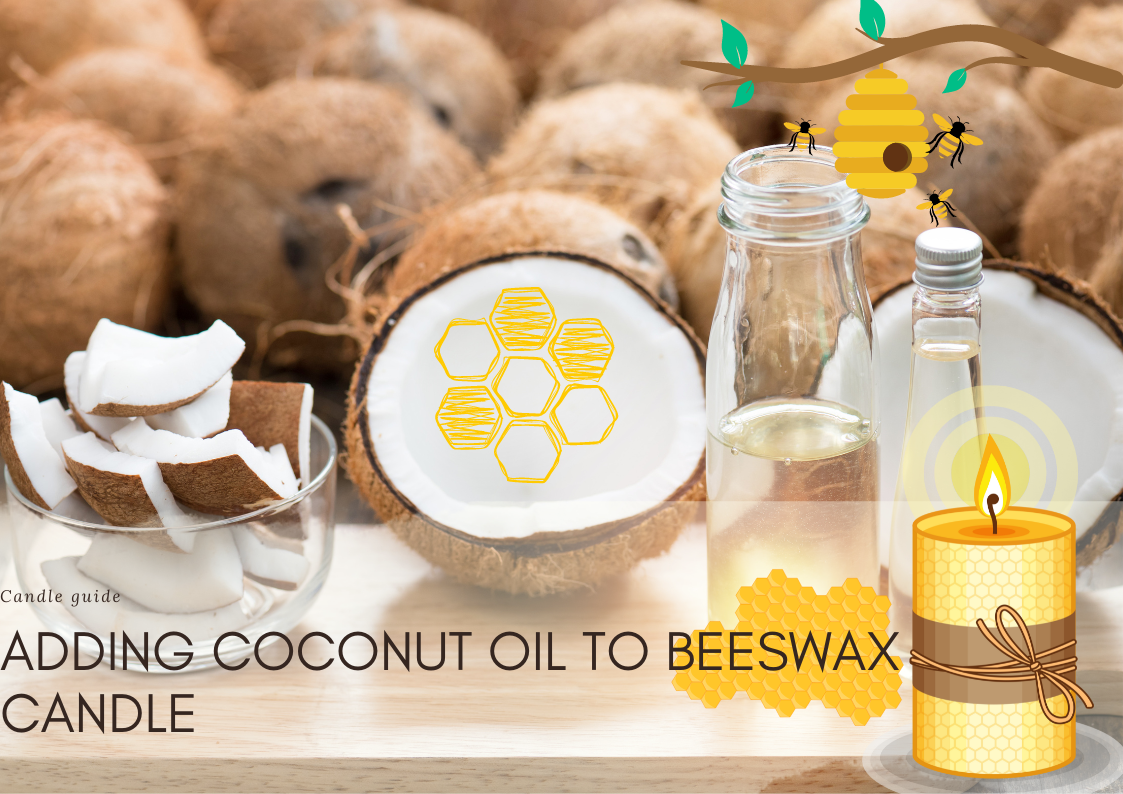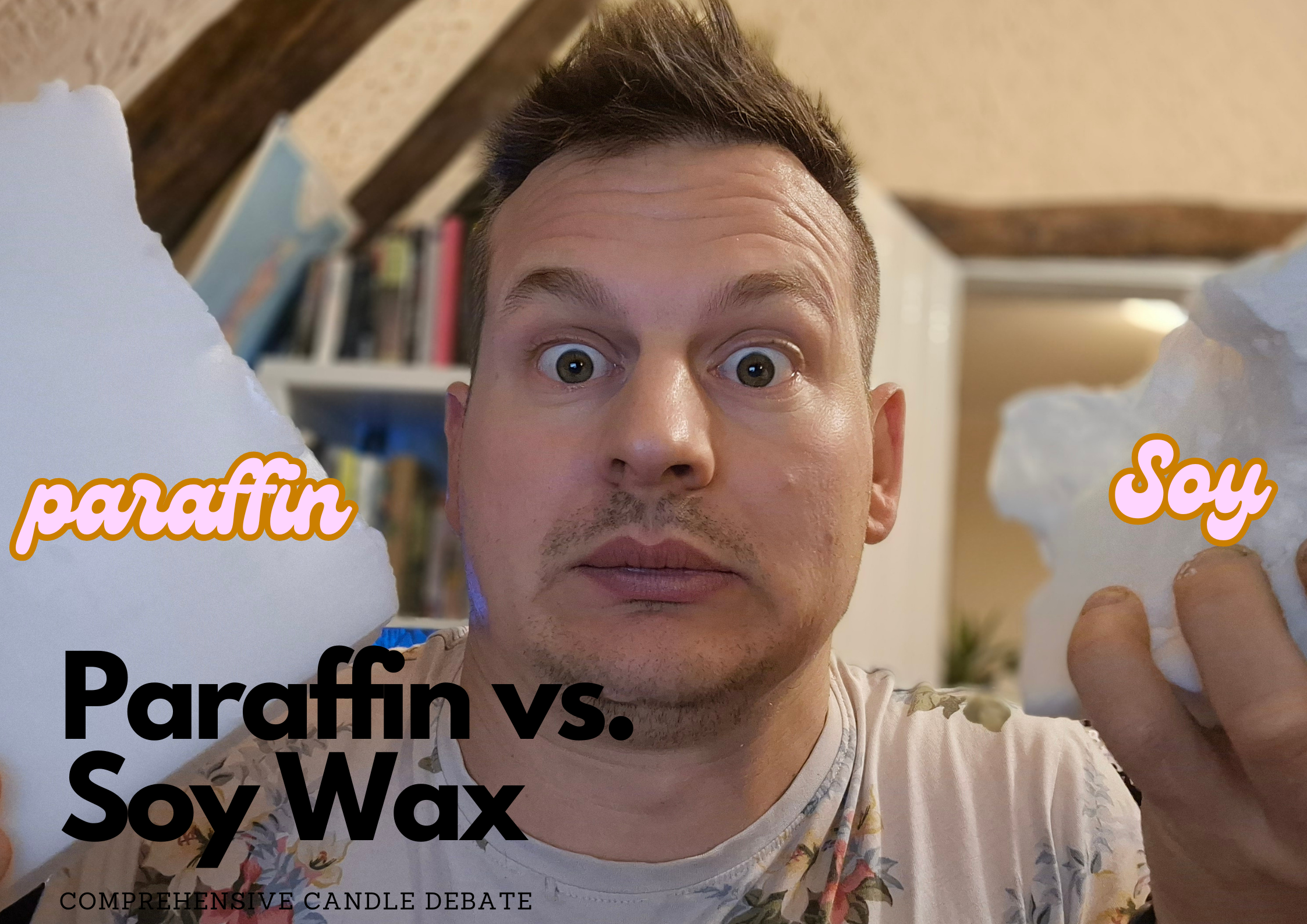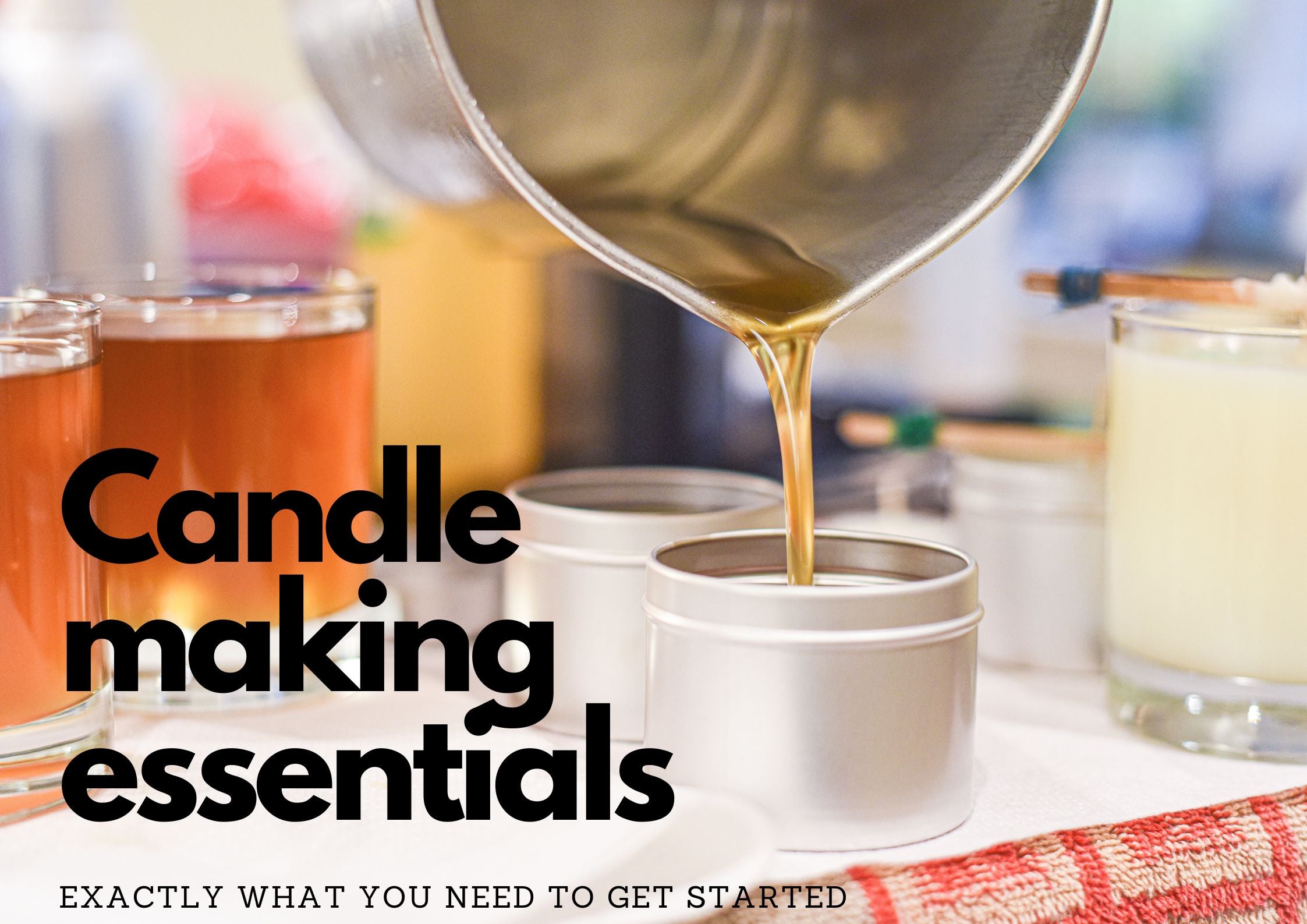Adding coconut oil to beeswax candle
Sep 14 , 2022
Beeswax is one of the most natural, environmentally friendly and cleanest candle waxes that can be used to make poured candles. However, in addition to its many positive qualities, this material also has its drawbacks, and is often mixed with other vegetable waxes. One of the most common natural additives is coconut oil, so let's take a look at why this is the obvious choice of candle makers!
What are the benefits of having coconut oil in our candle?
Mixing coconut oil into beeswax will lower its melting point, making the wax easier to melt, easier to pour, and the finished candle will have an even better burn quality.
Mixing coconut oil into the beeswax base of your candle can make the burn more even and stop the so-called tunnelling phenomenon. Tunnelling occurs when not the whole surface of the wax melts, but only a narrow central part, causing the wick to almost "dig into" the centre of the candle and it either goes out prematurely or burns out without using up all of the wax.
Coconut oil changes the consistency of the wax, which makes the surface of the candle more even and smooth, so you can even improve the look of the candle with this method.
By adding coconut oil, you can also increase the scent throw capabilities of the candle, as the lit wick will heat the wax faster and it will transfer enough heat to release the fragrances mixed into the wax.
Which type of coconut oil should we use?
Nowadays, like everything else, coconut oil is refined and various additives are used to make it more appealing. If you want to make a candle from natural materials, make sure you use only unrefined and additive-free, non-GMO coconut oil.
How to mix coconut oil and beeswax?
If you search on the internet, you will find practically every conceivable variation in mixing ratios. Some say to mix half and half, while at the other end of the spectrum claims that a pound of beeswax should be mixed with a teaspoon of coconut oil.
The quality of both beeswax and coconut oil can vary from manufacturer to manufacturer, and even from batch to batch, so to get the right ratio we all need a little experimentation and a bit of luck. Most hobby candle makers recommend a 50-50% mixing ratio, but it's definitely a good idea to start with a little more beeswax and less coconut oil to avoid the finished candles being too soft.
One of the advantages of making candles at home is that you can use whatever materials you like, so don't be afraid to experiment a little, especially if it means you can improve the quality of your candle! Mixing beeswax and coconut oil is not recommended in vain by almost everyone who works with beeswax candles: it is one of the best ways to perfect an otherwise amazing material.





